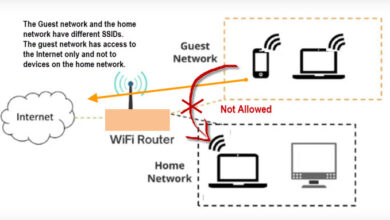Decoding the Mystery: “errordomain=nscocoaerrordomain&errormessage=could not find the specified shortcut.&errorcode=4”

In the realm of software development, particularly within the ecosystem of Apple’s operating systems such as macOS and iOS, encountering errors is a part of the daily grind. One such error, identified by the cryptic message “errordomain=nscocoaerrordomain&errormessage=could not find the specified shortcut.&errorcode=4,” can be particularly perplexing. This article aims to unravel the mystery behind this error, offering insights into its causes, implications, and, most importantly, solutions to navigate through it effectively.
Understanding the Error Domain
Before diving into the specifics of the error message, it’s crucial to understand what an error domain is. In the context of Apple’s development environment, an error domain is essentially a string that identifies the error’s source or category. The NSCocoa errordomain=nscocoaerrordomain&errormessage=could not find the specified shortcut.&errorcode=4 is a fundamental part of the Cocoa framework, which underpins most of the development on macOS and iOS. It encompasses a wide range of errors related to the application’s interaction with the operating system, including file system errors, data validation errors, and, as our specific case highlights, errors related to shortcuts or commands not being found.
The Nature of the Error Message
The error message “could not find the specified shortcut” suggests that the application was trying to execute or access a shortcut—a reference to a command, file, or action—that does not exist or cannot be located. This could be due to several reasons such as the shortcut being moved, deleted, or the reference being incorrectly specified in the code.
Error Code 4: A Closer Look
Error code 4 within the errordomain=nscocoaerrordomain&errormessage=could not find the specified shortcut.&errorcode=4 is typically associated with NSFileNoSuchFileError, indicating that the specified file or resource could not be found at the expected path. When this error code is returned in the context of a shortcut, it implies that the system cannot locate the shortcut or the resource it points to.
Common Scenarios Leading to This Error
Several common scenarios can lead to the occurrence of this error. Understanding these can help in diagnosing and resolving the issue more effectively:
- Incorrect Path Specification: The most straightforward cause is that the path specified for the shortcut is incorrect. This could be due to a typo, an outdated path, or a misunderstanding of how paths are resolved in the application’s environment.
- Dynamic Resource Location: In applications that dynamically generate or modify resources, the target of a shortcut may have been moved or renamed, making the original shortcut invalid.
- Environment-Specific Issues: The error might only occur in specific environments (e.g., development vs. production) due to differences in configuration, such as file system structure or access permissions.
- Code and Resource Mismatch: During updates or migrations, the code referencing shortcuts might not have been updated to reflect changes in the resources or their locations, leading to mismatches.
Troubleshooting and Resolving the Error
Troubleshooting this error involves a methodical approach to identify and rectify the underlying cause. Here are several strategies that can help:
Verify the Shortcut’s Path
The first step is to verify the path specified for the shortcut. Check the path for accuracy, ensuring it points to the correct location. Consider using absolute paths for clarity, or, if relative paths are used, ensure the base reference point is correctly defined.
Review Application Logs
Application logs can provide valuable context about the operations leading up to the error. Look for any indications of why the shortcut could not be found, such as preceding errors that might have affected the shortcut’s availability.
Check for Environmental Differences
If the error occurs in one environment but not another, closely compare the configurations and file systems of the different environments. This comparison might reveal discrepancies that lead to the error in one environment but not in the other.
Update Code and Resources Together
Ensure that any changes to resources or their locations are reflected in the code that references them. This includes updating paths in the code when files are moved or renamed and ensuring that any dynamic generation of resources is correctly aligned with the code’s expectations.
Read also: Cracking the Code Obfuscation Layers: Keeping Software Safe in the Digital Era
Utilize Error Handling
Implement robust error handling around shortcut access. This can include checks to confirm the shortcut’s existence before attempting to use it and fallback mechanisms in case the shortcut is not found. Error handling not only helps in preventing the application from crashing but also provides a mechanism to log detailed information about the error, aiding in diagnosis.
Conclusion
The “errordomain=nscocoaerrordomain&errormessage=could not find the specified shortcut.&errorcode=4” error is a reminder of the complexities involved in managing resources and their references within an application. By understanding the error’s context, exploring common causes, and applying systematic troubleshooting and resolution strategies, developers can overcome this hurdle. This process not only resolves the immediate issue but also contributes to the developer’s toolkit of strategies for managing and debugging errors in Apple’s development environments.
In navigating these challenges, developers enhance their proficiency in working within these frameworks, contributing to more resilient and error-tolerant applications. As with many aspects of software development, the key lies in a meticulous approach to problem-solving, leveraging detailed logs, understanding the underlying frameworks, and maintaining a close alignment between code and its referenced resources.



